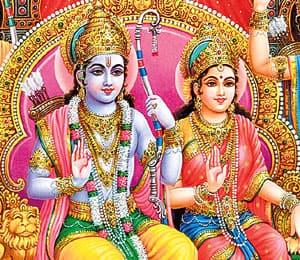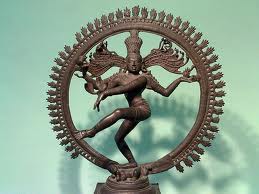How to worship in a Shiva Temple - Part 1 - Vinayaga
How to worship in a Shiva Temple - Part 1 - Vinayaga by Shastriyan
All work in the universe will succeed if it is not destructed. So only our ancestors used to destroy the obstacle by praying to the Vighna Raja (Lord Vinayaka).
Why we want to worship him at starting itself? Even though muppatthi mukkodi (3,30,00,000) devas are there, why we are going behind this Ganapati? Like this many question are arising in our mind.
For the first query the proverb “Prevention is better than cure” is the answer.
For the second, in Vedas itself Ganapathi Upanishad is the starting mantra.
After that only all other mantras are said. The meaning for Ganapathi - “Gana” means Vedas and “Pathi” means the Ruler. By the name itself we can understand why we are worshiping him at the starting.
While going to temple at first we see the Ganapathi Deva and praying to him that "oh! god the destroyer of destruction kindly do it in my life too". Without praising, even a child won't work for us and so we chant the prarthana mantra (hyms of requisition) as follow
“Shuklambaradharam Vishnum Shashivarnam Chaturbhujam Prasannavadanam Dhyayet sarvavignopashantaye.”
While saying this we will knock the two sides of our fore head 5 times. Whenever we chant the sloka we should try to know the meaning of it because Manasavaca karmana is our heritage. It means we should involve ourself by mind and work for success.
Let us do the prayer manasavaca karmana by knowing the meaning of this sloka “The one who has white umbrella”.
On those days the King used to have the umbrella as a symbol of protection, like the tree protects us and gives the shade. Here the specialty is that shvetambara, white umbrella which insists the peaceful protection. The word shvetambara also means white silk dhari means wearer.
Vishnu means good,
shashi means moon,
varnam means color. the moon colored.
Chatur means four
bhujam means hand. Four handed.
prasanna means happy
vadanam means face, happy face
dhyayet means meditate,
sarvavigna means all destruction,
upashantaye means destroying .
Five times knocking while five prasing. The knock is the work among the manasa vaca karmana.
After praising him he is ready to please you or give boon to you. At the starting itself we should not ask other thing which is not helpful for life.
Keeping this in mind our ancestors chants this mantra-
ekadantaya vidmahe vaktundaya diimahii tanno danti pracodayat.
Meaning ekadanta means one Tusk. behind this there is a story The great saint Valmeki willing to narrate the tale of Bhagavan Sree Rama, who's is the Lord of Peace. When he started to think of that shantasvaropi the thoughts and tale of him flows very fast in his mind. So he decided to appoint a writer for his narration. The writer has to write simultaneously at the fast of his saying. At last he appointed lord Ganapathi as his writer. So he broke one of his tusk and wrote by it. That's why all the idol of Ganapathi have only one tusk.
Some of the Famous Vinayaga Temples
http://www.templeadvisor.com/temples/info/10212
Siddhivinayak Temple is a Richest Temple in Mumbai-Ganesha Temple.
Pondicherry Manakula Vinayagar Temple, famous temple in India-Hindu Temple for Ganesha.
Ucchi Pillayar Temple is a Famous Hill-Cave Temple-Ganesh- Malaikottai-Remover of Obstacles. Sit-ups to Surpakarna
If we go to a Shiva temple we use to rise our hands above the head to do namaskaram. The belief behind this is the holy Ganges flowing out from lord Shiva's head so we rise above the head as a symbolic action.
If we go to lord Vishnu temple we used to place our hands in between the chest because goddess Lakshmi is there so we place our hands in between the chest as a symbolic action.
While going to Surpakarna (Lord Vinayaka) temple we used to put three sit-ups by holding the ears because the goddess Sidhi and Buddhi are sitting near to his ears. So only we suppose to hold the ear. You may ask why the sit ups? Because, while doing sit ups our blood flows good overall the body and if the blood flows good means the brain works good then you can attain the Goddess Siddhi for concentration and by concentration you can reach the Goddess Buddhi (knowledge). So do sit-ups to surpakarna (Elephant like ears) and attain the soul knowledge.
How to worship in a Shiva Temple - Part 1 - Vinayaga






